Prehistoric Society Research Papers
Publisher: Oxbow Books
Series editor: Michael J. Allen
The Prehistoric Society Research Papers, co-published with Oxbow Books, publish collections of edited papers and single author monographs covering many aspects of British and European prehistory. These may be derived from conferences, or research projects; they specifically exclude the publication of single excavation reports alone though a major site may be presented as a springboard for a much wider discussion of landscape, chronology, regional development etc. The Research Papers present the fruits of the best of prehistoric research, complementing the Society’s respected Proceedings by allowing broader treatment of key research areas. The Research Papers is a peer-reviewed series.The Prehistoric Society Research Papers, co-published with Oxbow Books, publish collections of edited papers and single author monographs covering many aspects of British and European prehistory. These may be derived from conferences, or research projects; they specifically exclude the publication of single excavation reports alone though a major site may be presented as a springboard for a much wider discussion of landscape, chronology, regional development etc. The Research Papers present the fruits of the best of prehistoric research, complementing the Society’s respected Proceedings by allowing broader treatment of key research areas. The Research Papers is a peer-reviewed series.The Prehistoric Society Research Papers, co-published with Oxbow Books, publish collections of edited papers and single author monographs covering many aspects of British and European prehistory. These may be derived from conferences, or research projects; they specifically exclude the publication of single excavation reports alone though a major site may be presented as a springboard for a much wider discussion of landscape, chronology, regional development etc. The Research Papers present the fruits of the best of prehistoric research, complementing the Society’s respected Proceedings by allowing broader treatment of key research areas. The Research Papers is a peer-reviewed series.The Prehistoric Society Research Papers, co-published with Oxbow Books, publish collections of edited papers and single author monographs covering many aspects of British and European prehistory. These may be derived from conferences, or research projects; they specifically exclude the publication of single excavation reports alone though a major site may be presented as a springboard for a much wider discussion of landscape, chronology, regional development etc. The Research Papers present the fruits of the best of prehistoric research, complementing the Society’s respected Proceedings by allowing broader treatment of key research areas. The Research Papers is a peer-reviewed series.
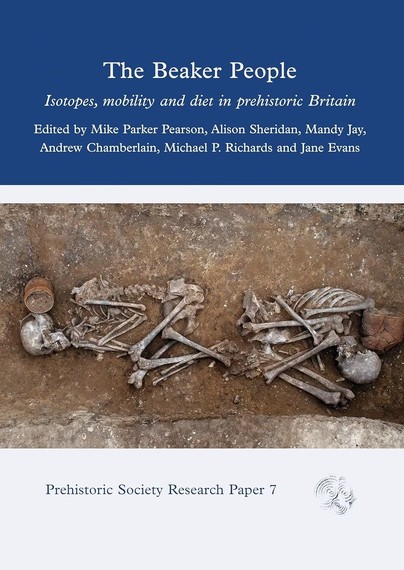
Format: Paperback
Pages: 616
ISBN: 9798888571545
Pub Date: 10 Mar 2024
Illustrations: b/w and color
Description:
The Beaker People: isotopes, mobility and diet in prehistoric Britain presents the results of a major project that sought to address a century-old question about the people who were buried with Beakers a – the distinctive pottery of Continental origin that was current, predominantly in equally distinctive burials, in Britain from around 2450 BC. Who were these people? Were they immigrants and how far did they move around?
What did they eat? What was their lifestyle? How do they compare with Britain’s earlier inhabitants and with contemporaries who did not use Beaker pottery? An international team of leading archaeologists and scientists, led by Professor Mike Parker Pearson, was assembled to address these questions.Around 300 skeletons were subjected to isotope analysis to explore patterns of mobility and diet, and 150 new radiocarbon dates were obtained. Dental microwear was examined for 64 individuals to provide further information about the food they had eaten, and new information on the sex and age of 201 people obtained. A comparative study was undertaken of the shape and size of Beaker users’ skulls and those of Neolithic people in the Peak District of England, to examine the long-held claim that there was a switch from long-headed to round-headed people with the appearance of Beakers. Tantalizing evidence for head-binding among Neolithic people was found. The range of objects found in Beaker graves was reviewed.In addition, the Beaker People Project was able to incorporate the results of another project, focusing on Beaker users in north-east Scotland (The Beakers and Bodies Project) along with other recently obtained data, including ancient DNA results. Overall, new light has been shed on 369 people: 333 Beaker and non-Beaker users from the core 2500–1500 BC period, along with 17 from the Neolithic and 19 from after 1500 BC. While the genetic data provide convincing evidence for immigration by Continental Beaker users, the isotopic data indicate a more detailed picture of movements, mostly of fairly short distances within Britain, by the descendants of the first Beaker users. This lavishly illustrated book presents a body of data that will be vital to studies of Chalcolithic and Early Bronze Age Britain for decades to come.

Format: Hardback
Pages: 216
ISBN: 9781789251524
Pub Date: 15 May 2023
Illustrations: b/w and colour
Description:
The current geography of north-west Europe, from the perspective of long-term Pleistocene climate change, is temporary. The seaways that separate southern Britain from northern France comprise a flooded landscape open to occupation by hunter-gatherers for large parts of the 0.5 million years since the English Channel’s formation.
While much of this record is now inaccessible to systematic archaeological investigation it is critical that we consider past human societies in the region in terms of access to, inhabitation in, and exploitation of this landscape. This latest volume of the acclaimed Prehistoric Society Research Papers provides a starting point for approaching the Middle Palaeolithic record of the English Channel region and considering the ecological opportunities and behavioural constraints this landscape offered to Neanderthal groups in north-west Europe. The volume reviews the Middle Palaeolithic archaeological record along the fringes of La Manche in northern France and southern Britain. It examines this record in light of recent advances in quaternary stratigraphy, science-based dating, and palaeoecology and explores how Palaeolithic archaeology in the region has developed in an interdisciplinary way to transform our understanding of Neanderthal behaviour. Focusing in detail on a particular sub-region of this landscape, the Normano-Breton Gulf, the volume presents the results of recent research focused on exceptionally productive coastal capture points for Neanderthal archaeology. In turn the long-term behavioural record of La Cotte de St Brelade is presented and explored, offering a key to changing Neanderthal behaviour. Aspects of movement into and through these landscapes, changing technological and raw material procurement strategies, hunting patterns and site structures, are presented as accessible behaviours that change at site and landscape scales in response to changing climate, sea level and ecology over the last 250,000 years.
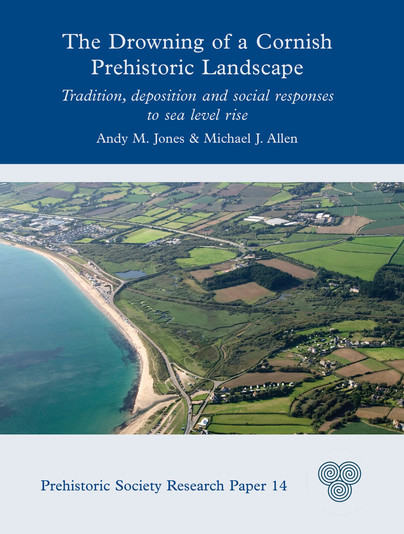
Format: Hardback
Pages: 256
ISBN: 9781789259230
Pub Date: 15 Apr 2023
Illustrations: B/W and colour
Description:
Between 2018 and 2019, Cornwall Archaeological Unit undertook two projects at Mount’s Bay, Penwith. The first involved the excavation of a Bronze Age barrow and the second, environmental augur core sampling in Marazion Marsh. Both sites lie within an area of coastal hinterland, which has been subject to incursions by rising sea levels.
Since the Mesolithic, an area of approximately 1 kilometre in extent between the current shoreline and St Michael’s Mount has been lost to gradually rising sea levels. With current climate change, this process is likely to occur at an increasing rate. Given their proximity, the opportunity was taken to draw the results from the two projects together along with all available existing environmental data from the area. For the first time, the results from all previous palaeoenvironmental projects in the Mount’s Bay area have been brought together. Evidence for coastal change and sea level rise is discussed and a model for the drowning landscape presented. In addition to modelling the loss of land and describing the environment over time, social responses including the wider context of the Bronze Age barrow and later Bronze Age metalwork deposition in the Mount’s Bay environs are considered. The effects of the gradual loss of land are discussed in terms of how change is perceived, its effects on community resilience, and the construction of social memory and narratives of place.The volume presents the potential for nationally significant environmental data to survive, which demonstrates the long-term effects of climate change and rising sea levels, and peoples’ responses to these over time.
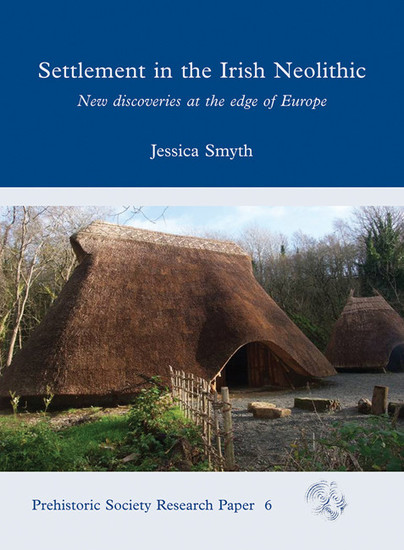
Format: Paperback
Pages: 208
ISBN: 9781789258820
Pub Date: 15 Dec 2022
Illustrations: B/w
Description:
The Irish Neolithic has been dominated by the study of megalithic tombs, but the defining element of Irish settlement evidence is the rectangular timber Early Neolithic house, the numbers of which have more than quadrupled in the last ten years. The substantial Early Neolithic timber house was a short-lived architectural phenomenon of as little as 90 years, perhaps like short-lived Early Neolithic long barrows and causewayed enclosures. This book explores the wealth of evidence for settlement and houses throughout the Irish Neolithic, in relation to Britain and continental Europe.
More importantly it incorporates the wealth of new, and often unpublished, evidence from developer-led archaeological excavations and large grey-literature resources. The settlement evidence scattered across the landscape, and found as a result of developer-funded work, provides the social context for the more famous stone monuments that have traditionally shaped our views of the Neolithic in Ireland. It provides the first comprehensive review of the Neolithic settlement of Ireland, which enables a more holistic and meaningful understanding of the Irish Neolithic.
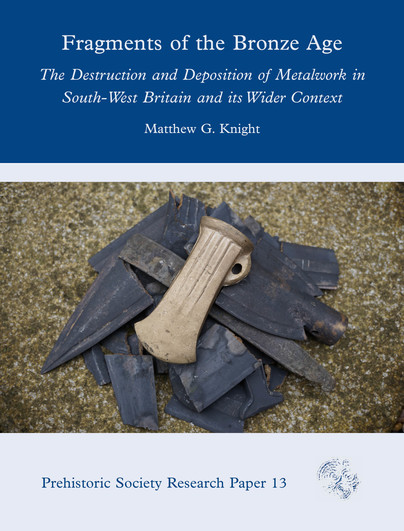
Format: Hardback
Pages: 200
ISBN: 9781789256970
Pub Date: 15 Dec 2021
Illustrations: B/w and colour
Description:
The destruction and deposition of metalwork is a widely recognised phenomenon across Bronze Age Europe. Weapons were decommissioned and thrown into rivers; axes were fragmented and piled in hoards; and ornaments were crushed, contorted and placed in certain landscapes. Interpretation of this material is often considered in terms of whether such acts should be considered ritual offerings, or functional acts for storing, scrapping and recycling the metal.
This book approaches this debate from a fresh perspective, by focusing on how the metalwork was destroyed and deposited as a means to understand the reasons behind the process. To achieve this, this study draws on experimental archaeology, as well as developing a framework for assessing what can be considered deliberate destruction. Understanding these processes not only helps us to recognise how destruction happened, but also gives us insights into the individuals involved in these practices. Through an examination of metalwork from south-west Britain, it is possible to observe the complexities involved at a localised level in the acts of destruction and deposition, as well as how they were linked to people and places. This case study is used to consider the social role of destruction and deposition more broadly in the Bronze Age, highlighting how it transformed over time and space.
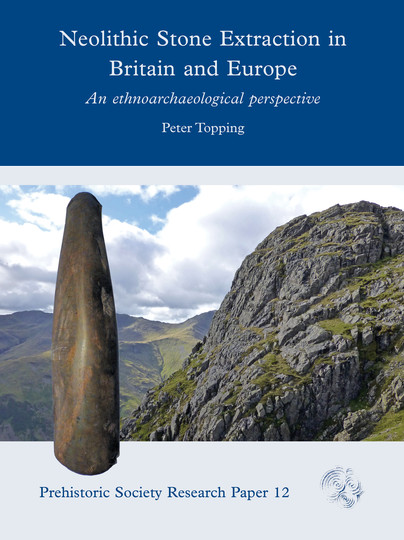
Format: Hardback
Pages: 200
ISBN: 9781789257052
Pub Date: 28 Nov 2021
Illustrations: B/w and colour
Description:
This book focuses on the introduction of Neolithic extraction practices across Europe through to the Atlantic periphery of Britain and Ireland. The key research questions are when and why were these practices adopted and what role did extraction sites play in Neolithic society. Neolithic mines and quarries have frequently been seen as fulfilling roles linked to the expansion of the Neolithic economy.
However, this ignores the fact that many communities chose to selectively dig for certain types of stone in preference to others and why the products from these sites were generally deposited in special places such as wetlands. To address this question, 168 near-global ethnographic studies were analysed to identify common trends in traditional extraction practises to produce robust statistics about their motivations and material signatures. Repeated associations emerged between storied locations, the organisation of extraction practices, long-distance distribution of products, and the material evidence such activities left behind. This suggests that we can now probably identify mythologised/storied sites, seasonality, ritualised extraction, and the use-life of extraction site products. The ethnographic model was tested against data from 223 near-global archaeological extraction sites, which confirmed a similar patterning in both material records. It was used to analyse the social context of 79 Neolithic flint mine and 51 axe quarry excavations in Britain and Ireland and to review their European origins. The evidence that emerges confirms the pivotal role played by Neolithic extraction practices in European Neolithisation and that the interaction of indigenous foragers with migrant miners/farmers was fundamental to the adoption of the new agropastoral lifestyle.
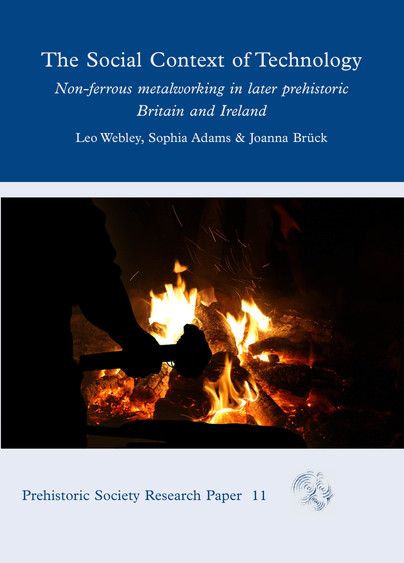
Format: Hardback
Pages: 280
ISBN: 9781789251760
Pub Date: 14 Jun 2020
Illustrations: b/w
Description:
The Social Context of Technology explores non-ferrous metalworking in Britain and Ireland during the Bronze and Iron Ages (c. 2500 BC to 1st century AD). Bronze-working dominates the evidence, though the crafting of other non-ferrous metals – including gold, silver, tin and lead – is also considered.
Metalwork has long played a central role in accounts of European later prehistory. Metals were important for making functional tools, and elaborate decorated objects that were symbols of prestige. Metalwork could be treated in special or ritualised ways, by being accumulated in large hoards or placed in rivers or bogs. But who made these objects? Prehistoric smiths have been portrayed by some as prosaic technicians, and by others as mystical figures akin to magicians. They have been seen both as independent, travelling ‘entrepreneurs’, and as the dependents of elite patrons. Hitherto, these competing models have not been tested through a comprehensive assessment of the archaeological evidence for metalworking. This volume fills that gap, with analysis focused on metalworking tools and waste, such as crucibles, moulds, casting debris and smithing implements. The find contexts of these objects are examined, both to identify places where metalworking occurred, and to investigate the cultural practices behind the deposition of metalworking debris. The key questions are: what was the social context of this craft, and what was its ideological significance? How did this vary regionally and change over time? As well as elucidating a key aspect of later prehistoric life in Britain and Ireland, this important examination by leading scholars contributes to broader debates on material culture and the social role of craft.
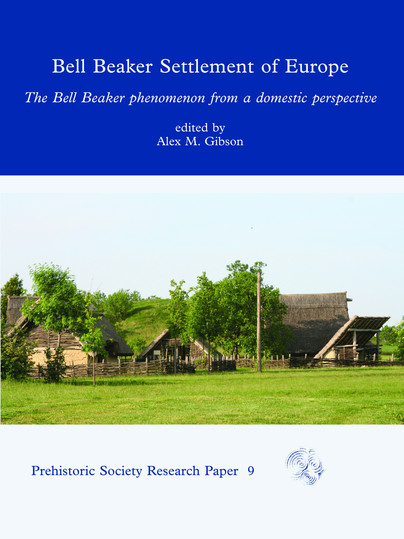
Format: Hardback
Pages: 392
ISBN: 9781789251241
Pub Date: 30 Jun 2019
Illustrations: b/w and colour
Description:
European studies of the Bell Beaker phenomenon have concentrated on burial and artefacts that constitute its the most visible aspects. This volume concentrates on the domestic sphere – assemblage composition, domestic structures (how they differ, if at all, from previous types, legacies), and provides the first pan-European synthesis of its kind. It is a Europe-wide survey and analysis of Bell Beaker settlement structures; this is particularly important as we cannot understand the Bell Beaker phenomenon by analysing graves alone.
Neither should we view Bell Beakers in isolation but must consider the effect that they had on already existing Late Neolithic cultures in the areas in which they appear. This volume is therefore intended to view the settlement aspect of Bell Beakers in context throughout Europe. It is the text book for Chalcolithic settlements and society. Contributors to the 19 papers belong to Europe-wide affiliation of experts specialising in Bell Beakers and the Chalcolithic (Archeologie et Gobelets) which addresses common pan-European issues surrounding the appearance and spread of Bell Beakers. This book summarises that data from the UK and many of the continental European countries; an increasingly important element of Beaker studies following recent isotopic and DNA evidence showing that the phenomenon was a result of human migration and not that of cultural ideas, trade and ideology. Each chapter deals with a defined region or country and is fully illustrated, including a corpus of Beaker houses and comparing then with Late Neolithic domestic structures where they are known to exist. The following themes will be addressed: 1. Regional syntheses in the UK and in Europe; 2.What native cultures existed before the arrival of Bell Beakers?; 3. What domestic ceramics were being used before the arrival of Bell Beakers?; 4. What stone and flint types were in use?; 5. What did pre-Bell Beaker houses look like? What size were they?; 6. What (if any) changes to 1–4 above resulted after the appearance of Bell Beakers?
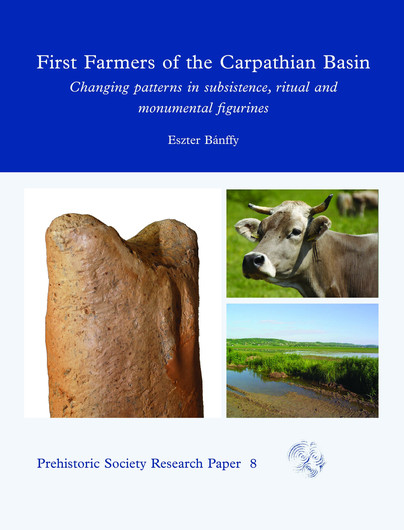
Format: Hardback
Pages: 192
ISBN: 9781789251647
Pub Date: 30 Apr 2019
Illustrations: b/w and colour
Description:
This study explores and demonstrates processes of cultural change in the first half of the 6th millennium cal BC, among the Körös and Starčevo groups of the northern marginal zones of the Balkans. Within this period and zone, which forms the southern part of the Carpathian basin, clay was the fundamental and most abundant building block of material culture, architecture, everyday life and cult practices. Clay walls, furniture, ten thousands of vessels, hundreds of clay figurines and other cult objects accumulated as huge piles of clay debris in every settlement.
Traditional system of subsistence patterns ceased to fully function when these first farmers occupied cool and wet hilly forested landscapes: the environmental and cognitive challenges gradually led to the decline of this clay-centred orbit. At the same time, these changes gave birth to a no-less stunning world constructed more of timber and stones, with transformations in subsistence, material culture and rituals. This transition is inextricably bound up with the formation of the first farmers’ communities of Central Europe, the Bandkeramik (LBK). The need for new elements of subsistence involved the increasing significance of cattle over caprinae: this shift infiltrated into ritual activities. The newly identified large horned cattle figurine type, acting as the cornerstone of this study, is an embodiment of the last instance among the South-East european communities of the clay world, while changes in the depictions already reflect the transformation of lifestyles. The role of cattle and their monumental depictions, found in domestic contexts, define methods for unfolding this phenomenon. In this fascinating new study, Eszter Bánffy takes a holistic approach to the definition of monumental early Neolithic clay figurines, analogies over South-east Europe, and the reconstruction of rituals involved in the making and using figurines. She reviews a broad scope of environmental and (social) zooarchaeological analyses to examine the concomitant development and significance of early dairying. The target is to present one possible narrative on the fading of the South-east European ’clayscapes‘, towards the birth of the LBK and the Central European Neolithic.
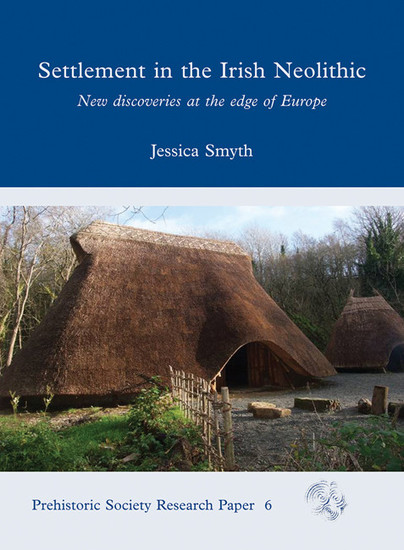
Format: Hardback
Pages: 208
ISBN: 9781842174975
Pub Date: 29 May 2014
Illustrations: 54 b/w figs
Description:
The Irish Neolithic has been dominated by the study of megalithic tombs, but the defining element of Irish settlement evidence is the rectangular timber Early Neolithic house, the numbers of which have more than quadrupled in the last ten years. The substantial Early Neolithic timber house was a short-lived architectural phenomenon of as little as 90 years, perhaps like short-lived Early Neolithic long barrows and causewayed enclosures. This book explores the wealth of evidence for settlement and houses throughout the Irish Neolithic, in relation to Britain and continental Europe.
More importantly it incorporates the wealth of new, and often unpublished, evidence from developer-led archaeological excavations and large grey-literature resources. The settlement evidence scattered across the landscape, and found as a result of developer-funded work, provides the social context for the more famous stone monuments that have traditionally shaped our views of the Neolithic in Ireland. It provides the first comprehensive review of the Neolithic settlement of Ireland, which enables a more holistic and meaningful understanding of the Irish Neolithic.

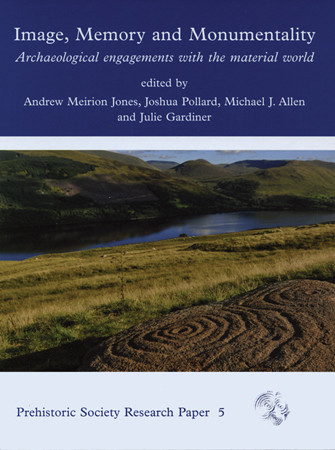
Pages: 366
ISBN: 9781842174951
Pub Date: 30 Jun 2012
Illustrations: 60 illustrations
Pages: 366
ISBN: 9781782973928
Pub Date: 31 Aug 2013
Illustrations: 60 illustrations
Description:
Leading scholars in these 29 commissioned papers in honour of Richard Bradley discuss key themes in prehistoric archaeology that have defined his career, such as monumentality, memory, rock art, landscape, material worlds and field practice. The scope is broad, covering both Britain and Europe, and while the focus is very much on the archaeology of later prehistory, papers also address the interconnection between prehistory and historic and contemporary archaeology. The result is a rich and varied tribute to Richard's energy and intellectual inspiration.
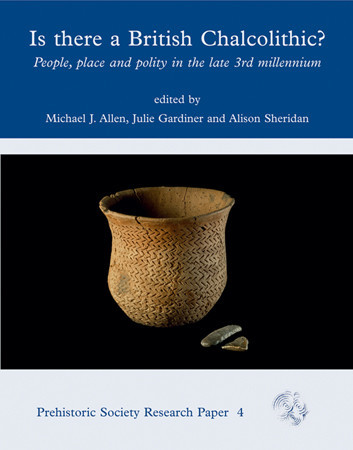

Pages: 336
ISBN: 9781842174968
Pub Date: 09 Jun 2012
Pages: 368
ISBN: 9781789256864
Pub Date: 15 Jul 2021
Description:
The Chalcolithic, the phase in prehistory when the important technical development of adding tin to copper to produce bronze had not yet taken place, is not a term generally used by British prehistorians and whether there is even a definable phase is debated. Is there a British Chalcolithic? brings together many leading authorities in 20 papers that address this question.
Papers are grouped under several headings. Definitions, Issues and Debate considers whether appropriate criteria apply that define a distinctive period (c. 2450 - 2150 cal BC) in cultural, social, and temporal terms with particular emphasis on the role and status of metal artefacts and Beaker pottery. Continental Perspectives addresses various aspects of comparative regions of Europe where a Chalcolithic has been defined. Around Britain and Ireland presents a series of large-scale regional case studies where authors argue for and against the adoption of the term. The final section Economy, Landscapes and Monuments , looks at aspects of economy, land-use and burial tradition and provides a detailed consideration of the Stonehenge and Avebury landscapes during the period in question. The volume contains much detailed information on sites and artefacts, and comprehensive radiocarbon datasets that will be invaluable to scholars and students studying this enigmatic but pivotal episode of British Prehistory.

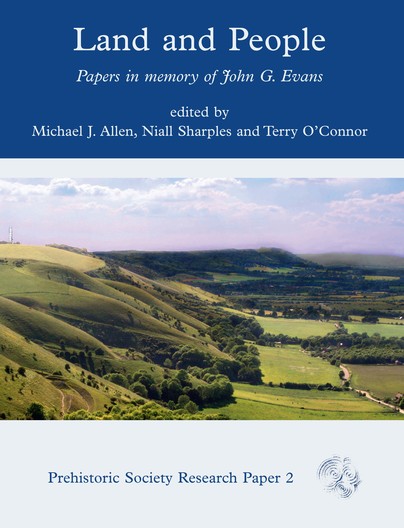
Pages: 240
ISBN: 9781842173732
Pub Date: 10 Sep 2009
Illustrations: 99 b/w illus, 13 tbls
Pages: 240
ISBN: 9781785707728
Pub Date: 30 Jun 2017
Illustrations: 99 b/w illus, 13 tbls
Description:
This volume is derived, in concept, from a conference held in honour of John Evans by the School of History and Archaeology and The Prehistoric Society at Cardiff University in March 2006. It brings together papers that address themes and landscapes on a variety of levels. They cover geographical, methodological and thematic areas that were of interest to, and had been studied by, John Evans.
The volume is divided into five sections, which echo themes of importance in British prehistory. They include papers on aspects of environmental archaeology, experiments and philosophy; new research on the nature of woodland on the chalklands of southern England; coasts and islands; people, process and social order, and snails and shells - a strong part of John Evans' career. This volume presents a range of papers examining people's interaction with the landscape in all its forms. The papers provide a diverse but cohesive picture of how archaeological landscapes are viewed within current research frameworks and approaches, while also paying tribute to the innovative and inspirational work of one of the leading protagonists of environmental archaeology and the holistic approach to landscape interpretation.
















